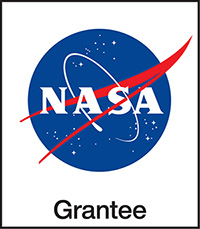5. Dangerous Dust
Learners test how dust resistant materials are.
Setup: Prep Time 40 min.
- Set up materials stations.
- Prepare chart.
- Print handouts.
- Prepare ice for Adventure 6, as noted in Materials & Preparation.
*See Materials & Preparation in the Educator Guide linked above for full info.
21st Century Skills
- Critical Thinking
Habits of Mind
- Apply science knowledge to problem-solving
- Investigate properties and uses of materials
Learners Will Do
- Test how materials protect against dust and consider which to use in a space glove.
Learners Will Know
- Engineers must learn how different materials work for different uses.
Connecting Across Adventures
- Adventure 4: Ready for Impact: Last time, learners tested how materials protect against impact.
- Adventure 5: Dangerous Dust: Today, learners test how materials resist dust. Later, they’ll use collected data to design space gloves.
- Adventure 6: Create a Space Glove: Next time, learners will plan, create, and test gloves to protect against space hazards.







